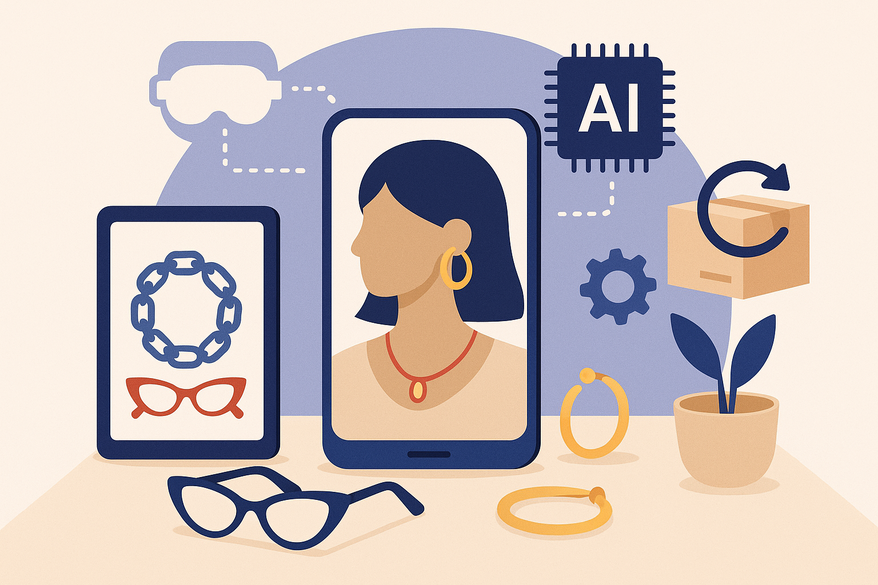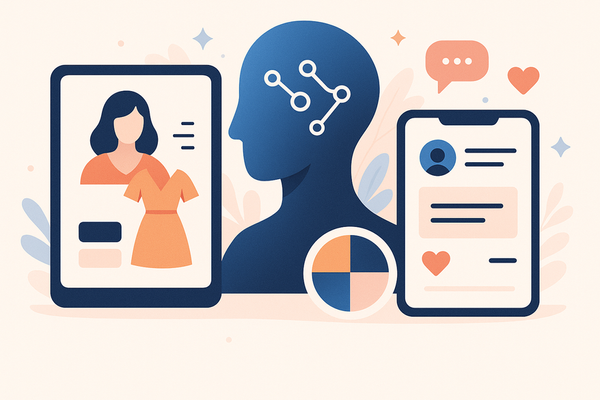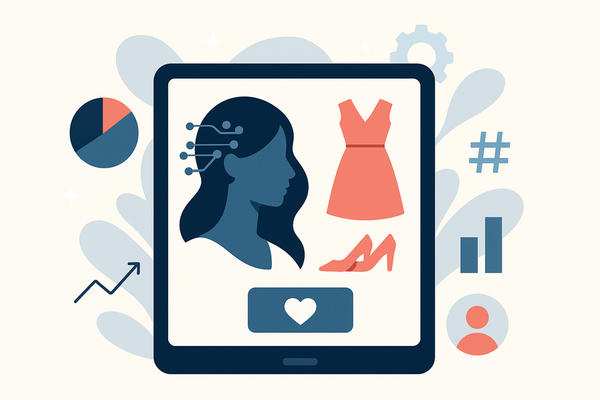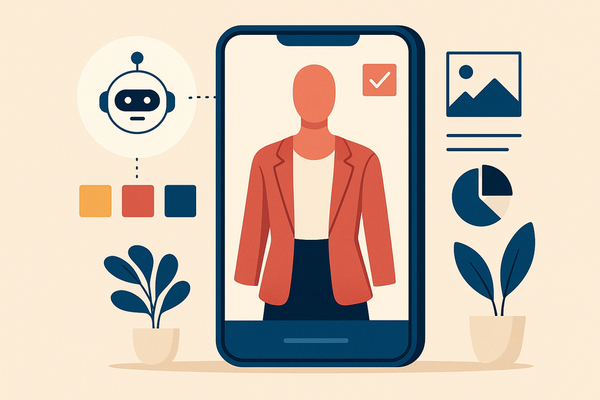How a Virtual Accessory Try-On App Is Revolutionizing Online Shopping
Explore how a virtual accessory try-on app uses AR and AI to transform online shopping, reduce returns, and offer personalized experiences.

8-minute read
Key Takeaways
- Bridges the gap between online and in-store shopping with AR/AI-powered try-on experiences.
- Reduces returns by offering realistic previews and data-driven recommendations.
- Drives engagement, personalized interactions and valuable consumer insights for retailers.
- Prepares brands for future innovations like social commerce and cross-reality experiences.
Table of Contents
- What Is a Virtual Accessory Try-On App?
- Relevance in Today’s Digital and Retail Landscape
- The Technology Behind the Experiences
- Benefits for Retailers and Consumers
- How Do Virtual Accessory Try-On Apps Work?
- Real-World Use Cases by Industry
- Future Trends and Innovations
- Key Takeaways & Actionable Advice
- Frequently Asked Questions
1. What Is a Virtual Accessory Try-On App?
A virtual accessory try-on app is a digital platform that uses your device’s camera to overlay 3D models of accessories—such as earrings, glasses, hats or watches—on users in real time. Think of it as a magic mirror that lets you see virtual items as if they’re on you.
Key functions explained:
- Live video overlay: The app taps into your front camera and superimposes digital accessories over your live image.
- Product catalog integration: Browse a brand’s full accessory lineup without leaving the app.
- Sizing and fit simulation: Models adjust to match real-world dimensions, giving a true-to-life preview.
These features eliminate uncertainty, simulate real dressing rooms, and act as a frictionless bridge between e-commerce catalogs and at-home visual testing.
2. Relevance of Virtual Accessory Try-On App in Today’s Digital and Retail Landscape
With online shopping booming and consumer expectations at an all-time high, virtual try-on apps address three core challenges:
- Product uncertainty: Worries about fit and style mismatches.
- High return rates: One in three online purchases is returned—often due to look or fit issues.
- Lack of personalization: Generic images fail to capture individual differences.
Pandemic-driven acceleration: During COVID-19 lockdowns, AR try-on adoption surged over 200% as retailers sought remote engagement solutions.
Today’s consumers demand instant customization, mobile-first experiences and social sharing. Virtual try-on apps deliver real-time, accurate previews, making them essential for brands aiming to boost sales and satisfaction.
3. The Technology Behind Virtual Accessory Try-On App Experiences
These apps rely on four core technologies:
Augmented Reality (AR)
- Scans the user’s environment or face and overlays 3D accessory models.
- Tracks movement to keep overlays aligned during motion.
Artificial Intelligence (AI) & Machine Learning
- Facial feature recognition detects eyes, nose, ears and wrists.
- Algorithms resize accessories for true-to-life fit.
- Style recommendations evolve by learning user preferences.
Computer Vision
- Detects and tracks body parts in real time.
- Positions virtual items accurately under various conditions.
Cloud Integration
- Stores 3D models and supports heavy computation off-device.
- Enables real-time catalog updates without app releases.
4. Benefits of a Virtual Accessory Try-On App for Retailers and Consumers
Retailer Advantages
- Reduced return rates save on shipping and restocking costs.
- Higher engagement and conversions through interactive experiences.
- Consumer analytics reveal style trends and preferences.
- Brand differentiation as a tech-forward innovator.
Consumer Advantages
- Convenience: Try on items anywhere, anytime.
- Confidence: Realistic previews reduce buyer’s remorse.
- Personalization: AI-tailored recommendations for each user.
- Social sharing: Encourage word-of-mouth marketing with try-on snapshots.
5. How Do Virtual Accessory Try-On Apps Work? (Step-by-Step)
- User Interaction: Open the app; camera feed activates; position your face or wrist within on-screen guides; overlay appears instantly.
- Ease of Use: Browse a catalog, filter by type or color, and use simple gestures—swipe, pinch, rotate—for inspection.
- Data Privacy: Processing occurs locally or on encrypted cloud servers; clear consent screens ensure GDPR compliance.
- Seamless Purchase Flow: Tap “Add to Cart” and checkout without leaving the app; integrated payment and order tracking complete the journey.
For a full-spectrum style evaluation, Maxx Report integrates advanced AR tools with AI-powered reports to refine your accessory choices.
6. Real-World Use Cases for Virtual Accessory Try-On App by Industry
- Fashion & Eyewear: Brands like Warby Parker and Ray-Ban offer virtual frame tests to boost confidence before purchase. For tips on matching jewelry to your undertone, see matching jewelry to your undertone.
- Jewelry & Watches: Online jewelers enable ring, necklace and watch previews to cut return rates. Explore AI-driven accessory styling at AI accessory styling advisor.
- Beauty & Cosmetics: Virtual shade trials for lipsticks, eyeshadows and blush drive conversions.
- Footwear & Apparel: Nike’s AR platform provides full-body previews for fit and style accuracy.
- Furniture & Lifestyle: Decor apps superimpose items like lamps and rugs in real spaces, following the same AR principles.
7. Future Trends and Innovations in Virtual Accessory Try-On App
- Advanced AI Personalization: Deep learning will refine sizing and style matches.
- Integration with Social Commerce: Shoppable AR in platforms like Instagram and TikTok.
- Cross-Reality Experiences: Merging AR and VR for immersive try-on rooms.
- In-Store Smart Mirrors: Interactive mirrors that connect to online catalogs.
- Improved Data Security: Next-gen encryption to protect biometric information.
8. Key Takeaways & Actionable Advice for Virtual Accessory Try-On App
- Enhanced Experience: Real-time previews build trust and reduce friction.
- Reduced Returns: Informed choices lead to higher satisfaction.
- Data Insights: Analytics enable smarter inventory planning.
- Competitive Edge: AR/AI adoption positions brands as innovators.
Actionable Advice:
- Prioritize user-centric AR/AI design for intuitive interactions.
- Ensure transparent data privacy and clear consent flows.
- Choose scalable cloud platforms with seamless e-commerce integration.
- Monitor analytics continuously to refine features and offerings.
Now is the time to explore how a virtual accessory try-on app can transform your customer experience. Request demos, launch pilot programs and embrace the future of immersive retail.
FAQ
- What devices support virtual try-on apps? Most modern smartphones, tablets and desktops with cameras and AR-capable browsers or native apps.
- Are my photos stored anywhere? Processing can occur locally or in encrypted cloud environments; always check privacy policies for details.
- Can I integrate a try-on solution into my existing site? Yes—most providers offer SDKs and APIs for seamless e-commerce integration.
- How much does it cost to implement? Pricing varies by features, user volume and service tiers. Contact vendors for custom quotes.
- What’s next for try-on technology? Expect deeper AI personalization, social commerce integration and cross-reality experiences.





